Knowing what to give dogs with diarrhea is essential to help reduce the duration of it when it happens. Diarrhea in dogs is fairly common and varies in intensity, duration and frequency depending on the dog.
It may be impossible to totally prevent diarrhea for your dog, but knowing as much as possible about dog diarrhea treatment will help limit the frequency of it happening.
This post contains affiliate links. If you make a purchase, I’ll earn a commission (at no extra cost to you). As an Amazon Associate, I earn from qualifying purchases. I donate 10% of my earnings to animal charities.
What to Give Dogs With Diarrhea
Learning what to give dogs with diarrhea, knowing the common causes for diarrhea in dogs, and knowing when to seek medical attention for dog diarrhea are your best bet to help your dog.
In this post, we’ll cover:
-
- How to Treat Dog Diarrhea
- What to Feed Dogs With Diarrhea
- Common Causes for Diarrhea in Dogs
- When to Seek Medical Attention for Dog’s Diarrhea
- How to Clean Up Dog Diarrhea on Carpet
- Free Mini-Course in Dog Nutrition
- Printable List of Foods to Give Dogs With Diarrhea
Watch My Video: What to Gove a Dog With Diarrhea
How to Treat Dog Diarrhea
I had a Boston Terrier named Cagney who had a ton of digestive issues and, unfortunately, experienced diarrhea fairly often.
I’ll include a list here of what I gave Cagney when he had diarrhea, and I’ll also include other foods recommended for dogs with diarrhea.
But first, let’s talk about fasting. Several years ago, my mini doxy, Taz, had diarrhea. I took her to the vet and the first thing he said was, “Stop feeding her.” I was shocked and asked, “What?!” He said, “Nothing in, nothing out.”
Some vets recommend withholding food for 12 to 24 hours, while providing water in small amounts frequently, to allow their system to settle down and clear whatever caused the diarrhea.
But dehydration can be a very serious consequence of the dog having diarrhea, so please be careful with fasting.
Puppies and elderly dogs, for sample, need nutrients, and fasting may not be safe for elderly dogs, small dogs who don’t have a lot of fat reserves, or dogs who have any sort of medical condition.
You must provide the dog with sufficient hydration and nutrients. I personally never did fasting with Cagney. I just gave him the list of food items I’ll share with you here.
What to Feed My Dog With Diarrhea
Let’s start with a list of what Cagney would eat and tolerate, then I’ll add more recommendations of foods that are appropriate for dogs with diarrhea.
Electrolyte Water. I personally think this is the most important thing, because as soon as the dog starts having diarrhea, he’s at risk of dehydration.
Simply replace the water in his bowl (make sure he’ll drink it) with Propel Unflavored Electrolyte Water or Unflavored Pedialyte.
Baby Food. Baby food was often the only thing I could get Cagney to eat when he had diarrhea. Chicken and turkey were his favorites.
Skinless Chicken Breast. Just boil it – don’t use any oil, butter or spices. I chopped this up in my food processor and mixed it in with absolutely everything I wanted him to eat.
Rice or pasta. Plain, mix in bowl with chicken or turkey. You can mix in some of the baby food to entice them with more flavor.
If you just mix the chicken pieces in, they might pick out all the chicken and leave the pasta like you see Cagney has done in this picture! LOL!!
Bananas. They’re rich in potassium, an important electrolyte that can become depleted during bouts of diarrhea or vomiting.
The recommendation is about one teaspoon of mashed banana per 10 pounds of body weight. I personally gave Cagney the baby food version of bananas.
Canned pumpkin. Cagney loved this! Make sure you get the plain canned pumpkin, not prepared pie filling. Canned pumpkin is strangely effective for diarrhea and constipation.
Yogurt (unless they can’t tolerate milk or milk products). Cagney loved yogurt! I gave him plain, unflavored yogurt. A little yogurt on a dish is a great way to sneak their meds into them, by the way. LOL
Those are the things I gave Cagney that he would eat and tolerate. Here’s a few more recommendations:
Unsweetened applesauce. As with banana, give about 1 teaspoon per 10 pounds of body weight.
Over-the-counter medications like Pepto Bismol, or products for dog diarrhea like Metronidazole or Flagyl may also be effective for dog diarrhea, but should be given with caution and only with a vet’s recommendation or approval.
I suggest purchasing Metronidazole or Flagyl at VetApprovedRx.com.
White potatoes. Boiled without skin.
Low-fat cottage cheese.
Egg (prepared with no butter or oil).
Best Dog Food for Dogs with Diarrhea
You might want to check out my post, Best Dog Food for Sensitive Stomachs for some information on possibly upgrading your dog’s diet to something that might agree with them more.
Just as an aside: Like I’ve mentioned, Cagney had a lot of digestive issues. I found that giving him vegetables every day helped a lot. He had fewer episodes of terrible gas and diarrhea once I started giving him vegetables.
I would cut up a small tomato and put it on a plate for him every day. He loved tomatoes.
I’d also give him frozen vegetables like peas and carrots (one of his favorites), green beans.
And instead of milk bones or treats, I’d crunch up baby carrots for him (be careful not to just hand a baby carrot to a dog – they’re the perfect shape to get stuck in their throat and cause chocking.
Chop them up a little first). Cagney’s digestive issues were definitely less when he was eating vegetables every day.
Common Causes for Diarrhea in Dogs
According to the AKC (American Kennel Club), these are the most common causes for diarrhea in dogs.
1. Eating something they shouldn’t. Getting into the garbage, eating spoiled food, or eating something in the yard or on a walk.
2. A change in diet made too quickly. It’s not wise to change a dog’s food any more than you have to. But if you do, mix a little of the new food in with the old food over a period of at least a week, gradually adding more of the new food and less of the old food each day.
3. Food intolerance.
4. Allergies.
5. Parasites such as roundworms or hookworms.
6. Poisonous substances or plants. Refer to this article, Foods That Are Poisonous for Dogs and Cats.
7. Swallowing something indigestible such as a toy (or if you have a large dog, possibly an entire kitchen rug!) I once sat with a family in a vet’s office waiting room while they anxiously awaited their Jack Russell Terrier coming out of surgery.
Turns out the dog had swallowed an eraser, and had to have surgery to have it removed.
This is a terrible health concern, obviously, not to mention it likely cost between $1,000 – $1,500 for the diagnoses, surgery to remove it, and post-surgery care. This is one of the reasons why we should all carry pet insurance! You can get more info about this in my article, Is Pet Insurance Worth it For Dogs?
8. Infections like parvovirus or distemper
9. Bacterial infections like salmonella.
10. Illnesses such as kidney and liver disease, colitis, inflammatory bowel disease, and cancer.
11. Antibiotics and other medications.
12. Stress or emotional upset. Be aware, especially if you have an elderly dog or a dog with a health condition, that things like fighting among family members in the house, loud noises or house repairs of any kind, the arrival of a new pet or baby.
Even company visiting can be stressful for a dog. Not to mention major changes like moving.
Refer to this article from the AKC called, A Survivor Guide for Dog Diarrhea, for a much more in-depth explanation about dog diarrhea.
When to Seek Medical Attention for Dog’s Diarrhea
This can depend on what is normal for your dog. Some dogs are more prone to digestive disorders, so you have to use your own judgment as to what is normal for your dog versus what is unusual.
However, here are few suggestions for what to look for when deciding whether to seek medical attention:
1. Diarrhea that does not stop despite home remedies. If you think it’s going on too long, you’re probably right.
2. Other symptoms like fever, lethargy or vomiting or weakness.
3. Dehydration. According to the PetMd article, Dehydration in Dogs, the most common symptom of dehydration is the loss of elasticity in the skin. When pulled lightly, the skin will not quickly come back to its original place.
Dogs can also get dry, tacky or pale gums as a result of dehydration. With advanced dehydration, the eyes sink in and the dog may collapse with shock.
Dehydration is very serious. You should always err on the side of caution and call the vet if your dog won’t take in water or food and is showing any of these symptoms.
4. Use of medication. If, for example, your dog has just started taking antibiotics then develops diarrhea, call the vet.
5. Existing medical conditions. If your dog has an existing condition such as cushing’s disease, cancer, diabetes, or if your dog is elderly, then getting the vet involved at the onset of diarrhea is probably wise.
Most importantly, it’s always time to call the vet when things just don’t seem right. You know your dog. Follow your instincts and give the vet a call if you’re concerned.
How to Clean Up Dog Diarrhea on Carpet
One last point that’s a huge part of the problem if your dog has diarrhea. And that’s how to get dog diarrhea out of carpet!
Whenever Cagney had diarrhea, I would cover my carpets with his blankets and towels.
It’s better to just protect the carpet and reduce stress for you and your dog by eliminating your desire to rush the dog outside every few minutes.
Remember, if they have diarrhea, they probably don’t feel good. It’s easier to rinse a mess out of a blanket or towel and throw in in the washer than to try to get diarrhea out of the carpet.
But just in case it happens, here are three steps for cleaning up pet diarrhea:
1. Remove the diarrhea with paper towels. First, cover the area with paper towels to absorb as much moisture as possible. Gently scoop/remove the diarrhea with the paper towels – don’t rub the carpet as this will only make the stains worse.
2. Clean the area. Use a mixture of water and dish soap (not too much) to cover the area and let it sit for a few minutes. Then gently rub the area with a clean washcloth or towel dampened with cold water to remove the stain. Let it set a few more minutes, then dry the area with a clean towel.
3. Disinfect and deodorize. Use a product called, Nature’s Miracle to disinfect and deodorize the area. It is guaranteed to remove diarrhea stains and odors from carpet. It even works well on old stains!
Nature’s Miracle is considered an “enzymatic cleaner.” That means it breaks down the compounds that cause the smell.
4. Vacuum the carpet. For more information about cleaning up pet stains on the carpet, read my article, How to Remove Dog and Cat Urine from Carpet.
More Help with Dog Health & Digestive Issues
- How to Stop a Dog from Eating Poop
- Top 3 Stool-Eating Deterrents for Dogs
- What to Give Dogs with Diarrhea – Dog Diarrhea Treatment
- Best Dog Food for Sensitive Stomachs
- Why Do Dogs Eat Grass?
- Why Is My Dog Coughing – Collapsed Trachea in Dogs
- Dog Massage Therapy – Training & Massage Tips and Techniques
- Is Dog Health Insurance Worth the Cost?
- Why Is My Dog Coughing? 6 Reasons Why Dogs Cough & What to Do
- Why Do Dogs Eat Rocks?
- Heartworm Prevention for Dogs
- Foods Poisonous for Dogs
I Hope This Helped!
Knowing what to do to treat dog diarrhea is important for your pet’s health. If your dog gets diarrhea, follow the guidelines here and always call your vet if you’re concerned.
Make sure the dog is taking in sufficient amounts of water to prevent dehydration, and let them rest.
Giving your dog a healthy diet, a stable and loving home, and regular medical care is the best way to stop dog diarrhea from occurring as frequently. Please feel free to comment below if you have additional information to share on this topic.
Before you go, enjoy this silly video of Cagney feeling better after yet another bout with diarrhea. 🙂 Debra
For more cute Cagney videos, CLICK HERE
Information Sources:
akc.org Doggie Diarrhea
petmd.com Common Emergencies Dog Dehydration
dogster.com What To Feed a Dog with Diarrhea or Other Stomach Issues
Disclaimer:
I am not a veterinarian. Information for this article was obtained online, from the sources shown above, and from my own personal experiences.
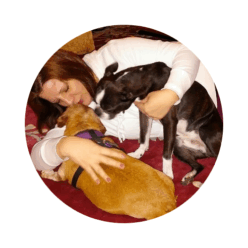
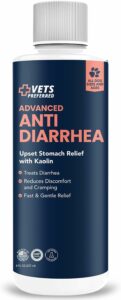
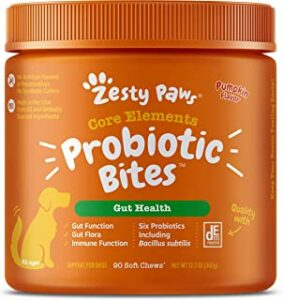

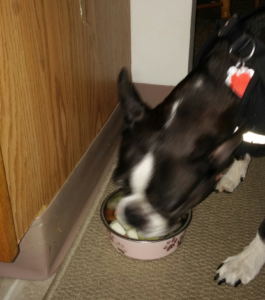
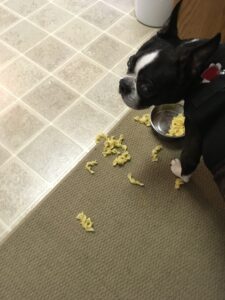
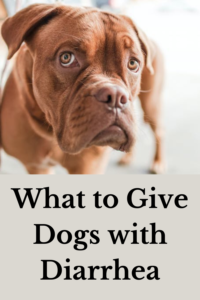
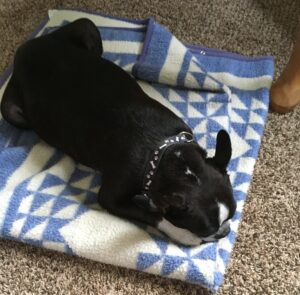
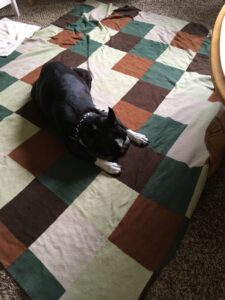
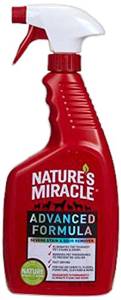






Cansull146@gmail.com I appreciate the information. My dog has diarrhea 24 hrs now. But still drink some water. I like
Hi Candy, I’m so sorry your dog isn’t feeling well. Diarrhea is terrible. Follow the advice in the article, but definitely call your vet it if doesn’t stop. Debra
This is great information. Thx Debra! Our dog started chewing on a pen and I caught the tail end of it. Charlie and his Purple Paw – that’s what we’ll call him. He’s had diarrhea 3 times today. We’re gonna do rice and egg and see how it goes.
Hi Barb! Do you think the ink caused the diarrhea? If so, you may want to give a quick call to the vet to let him/her know in case the ink is poisonous and your dog needs medical attention. Debra
Great info, haven’t had a puppy in years. It bring back memories of how to care for new little one
Thanks
Thanks so much, Jamie. 🙂